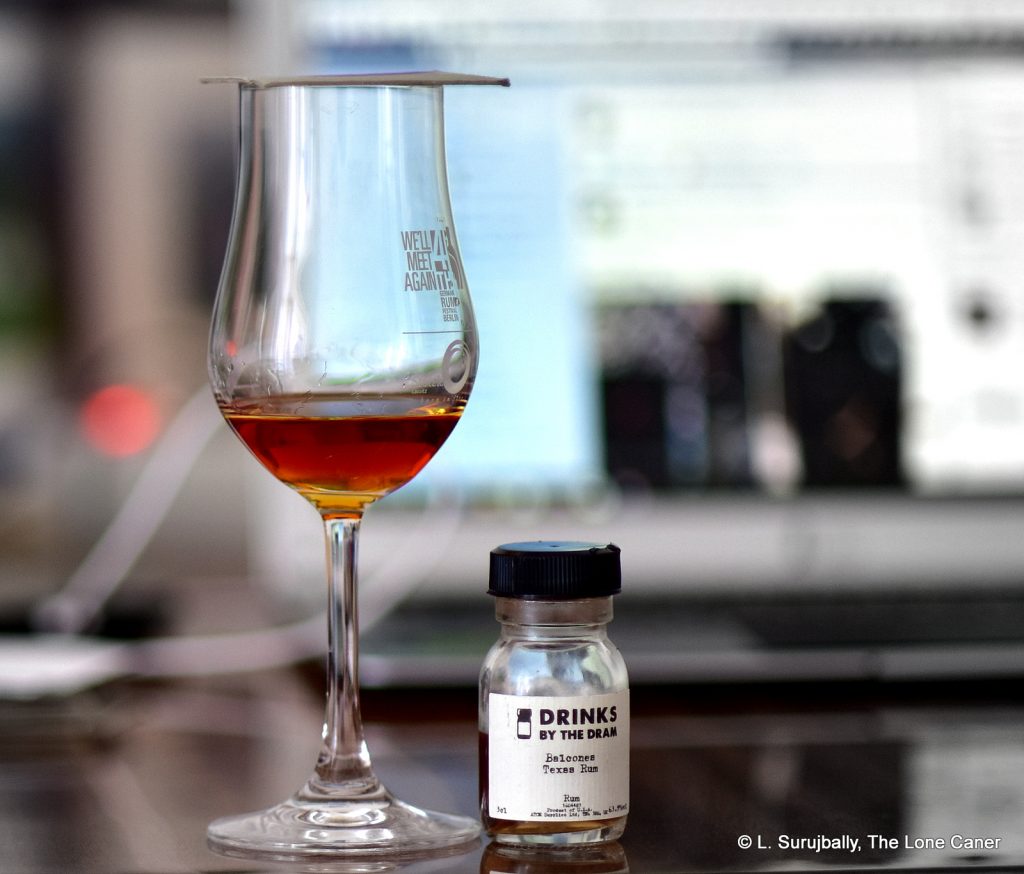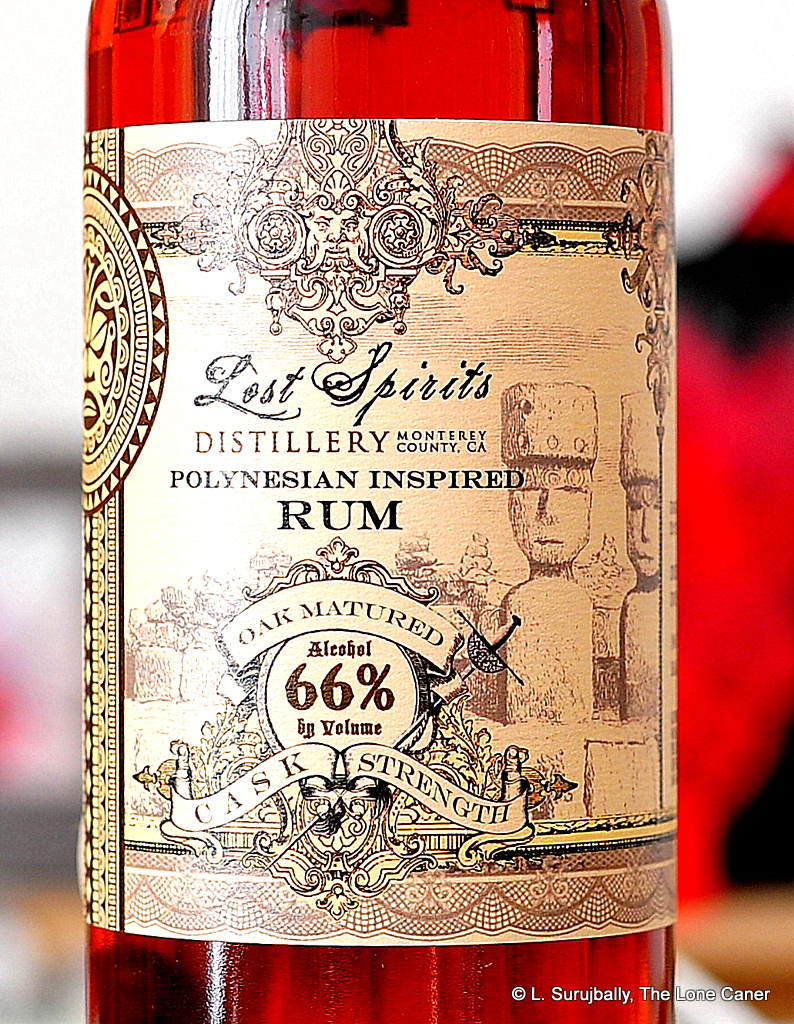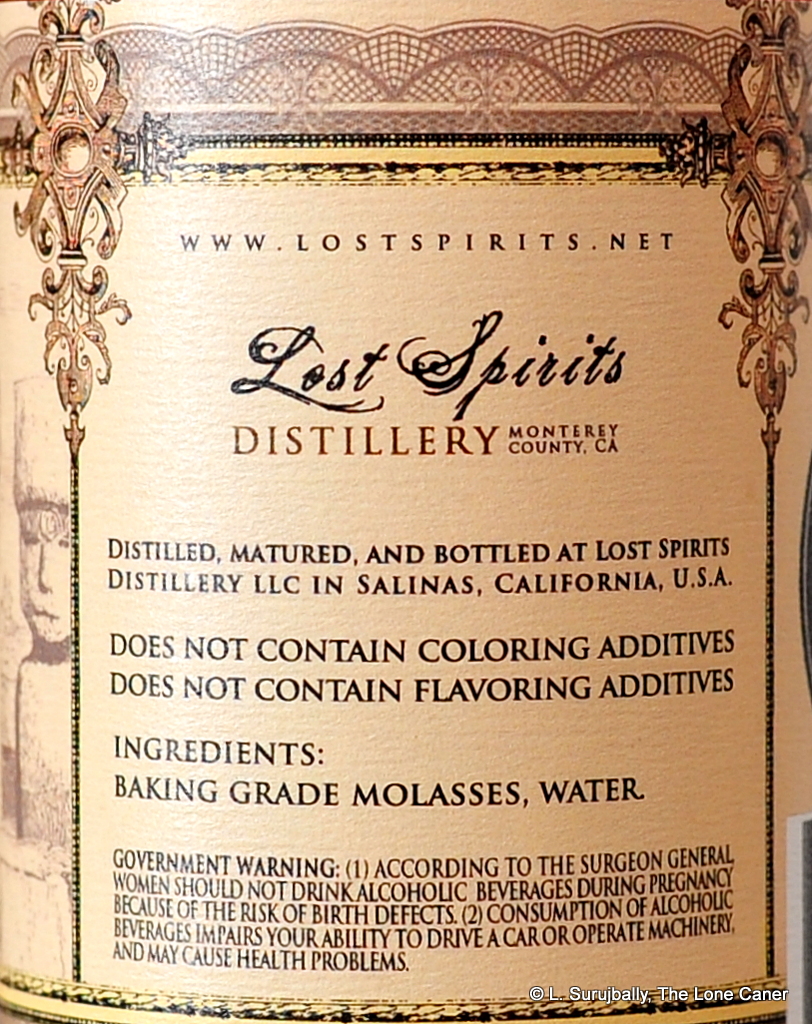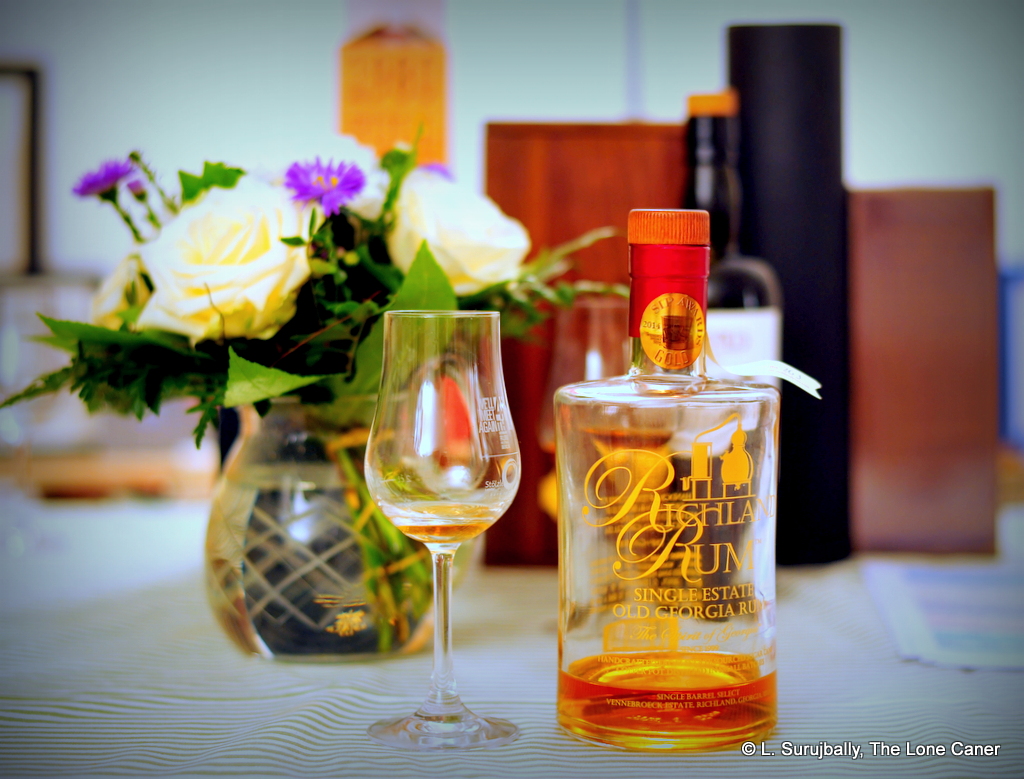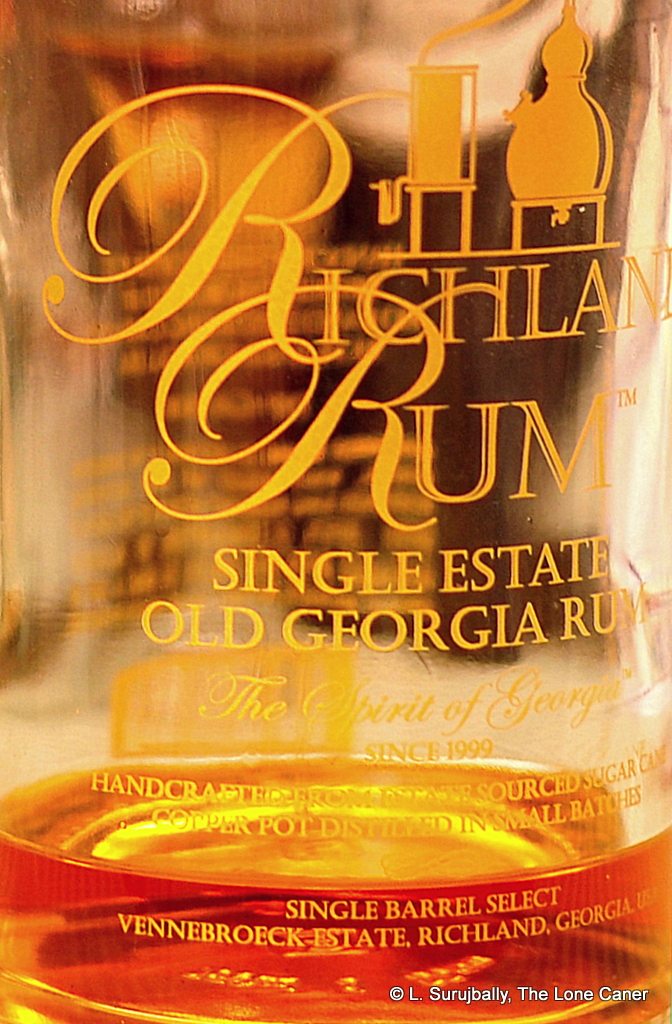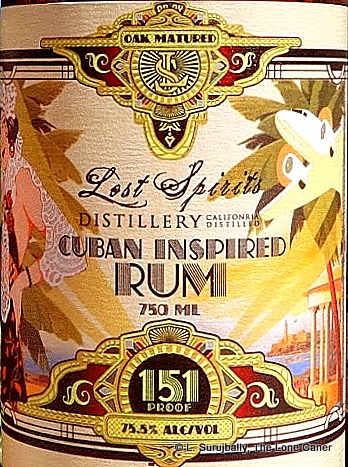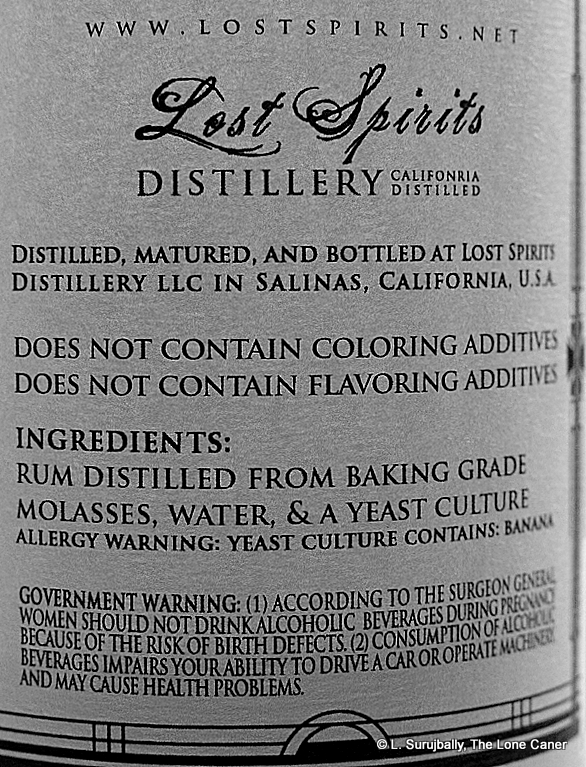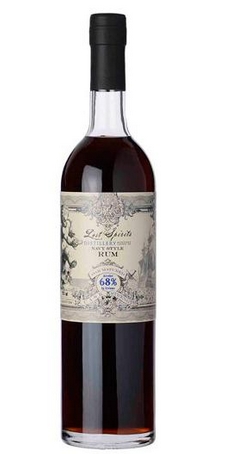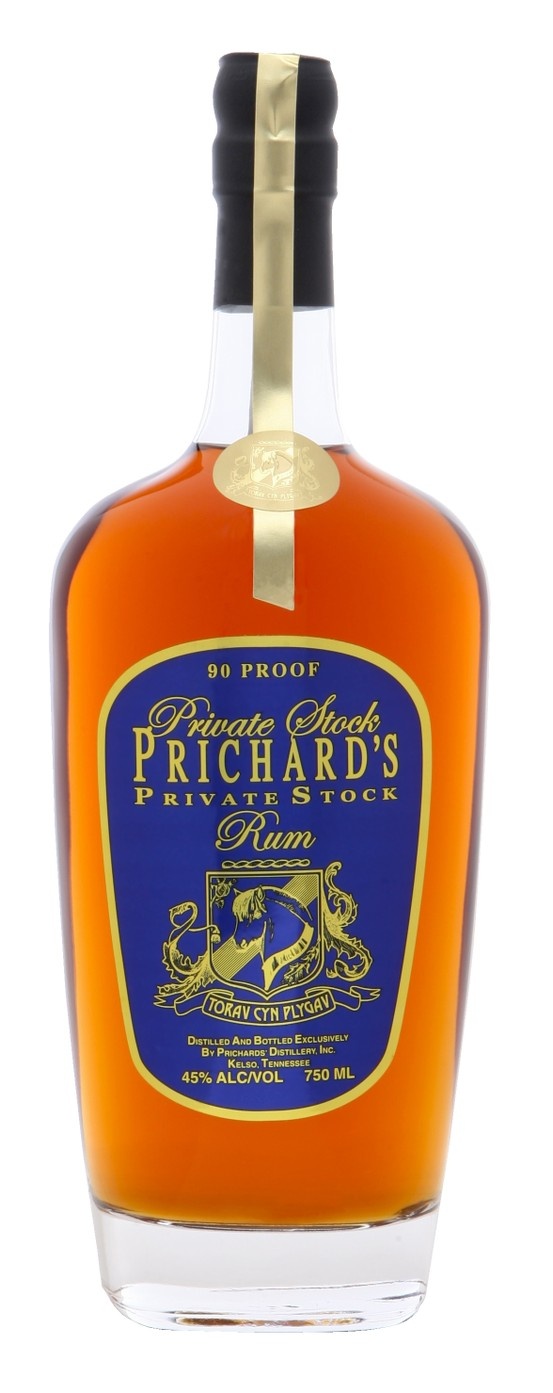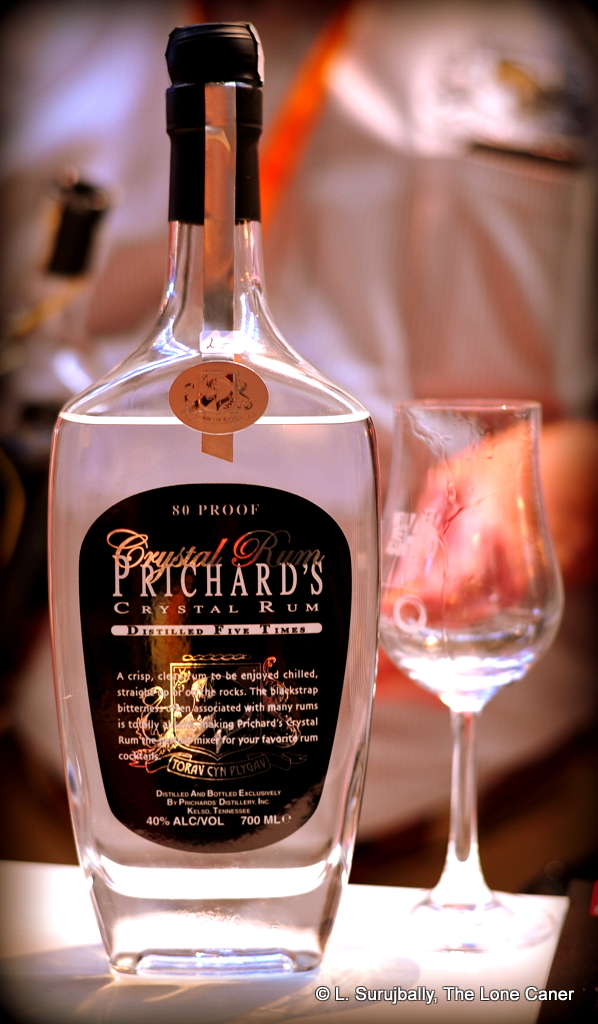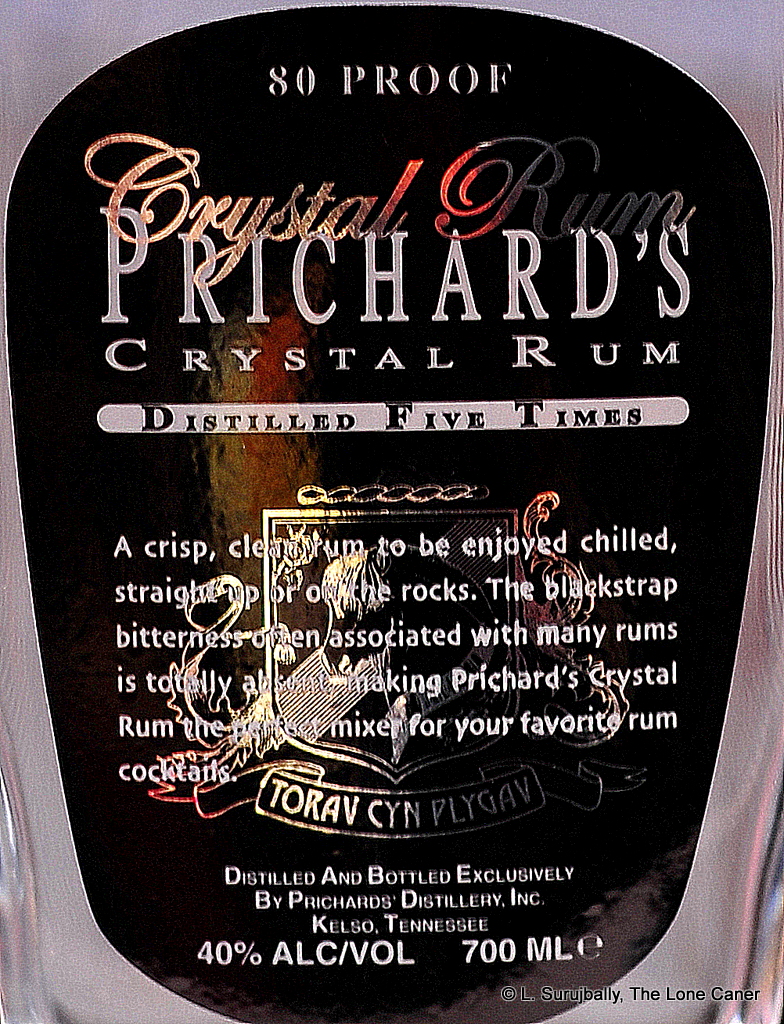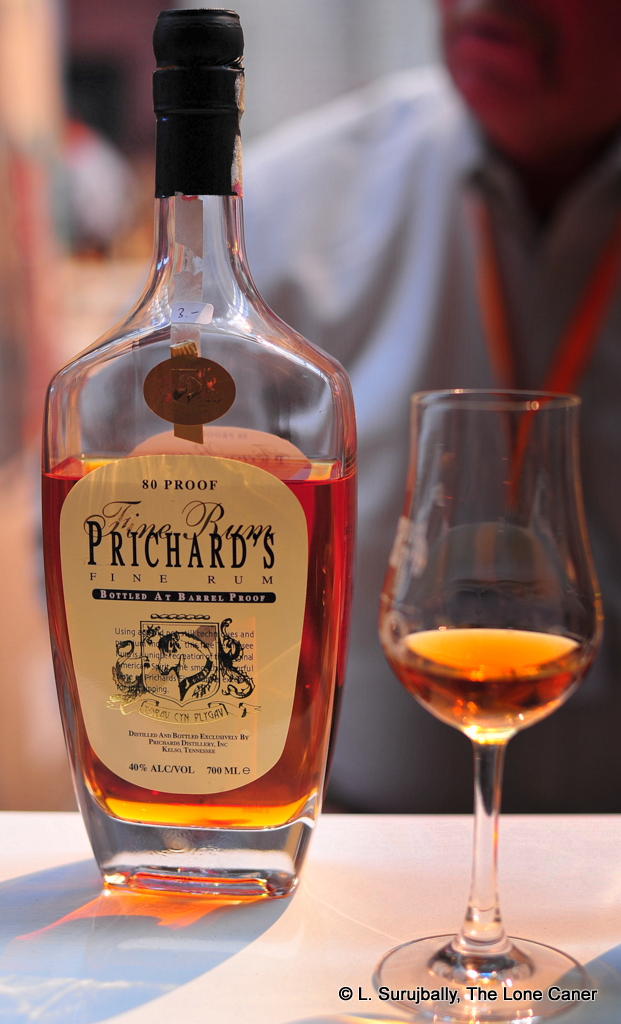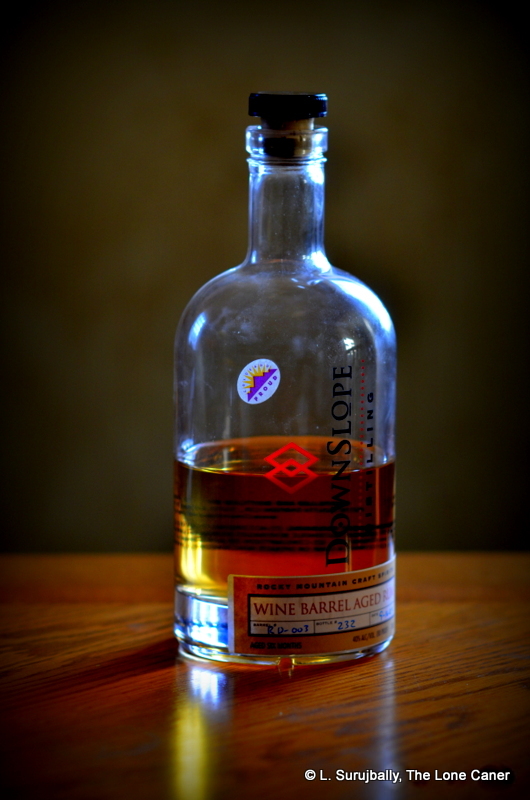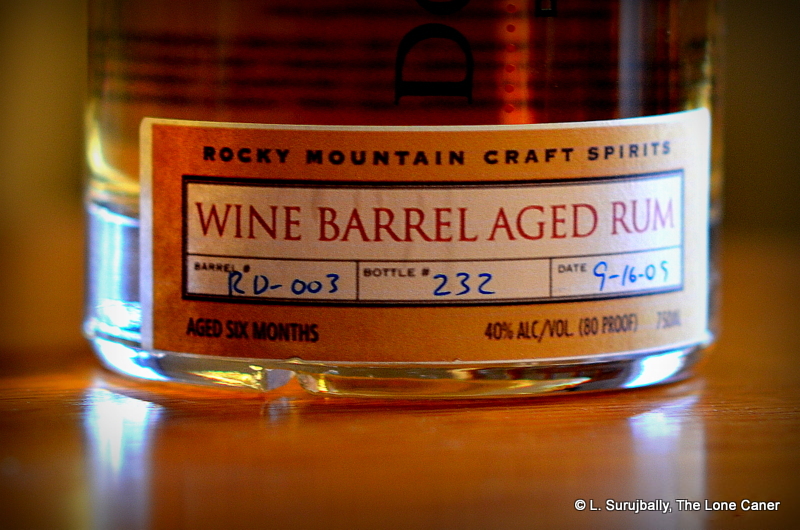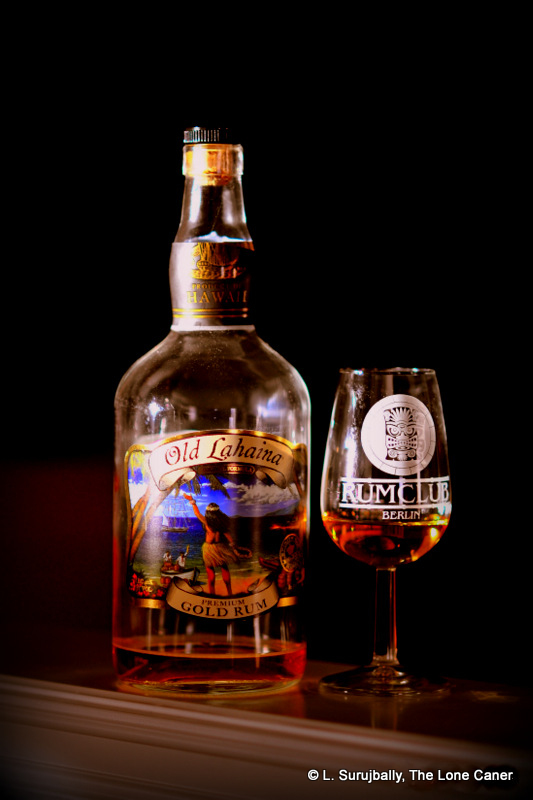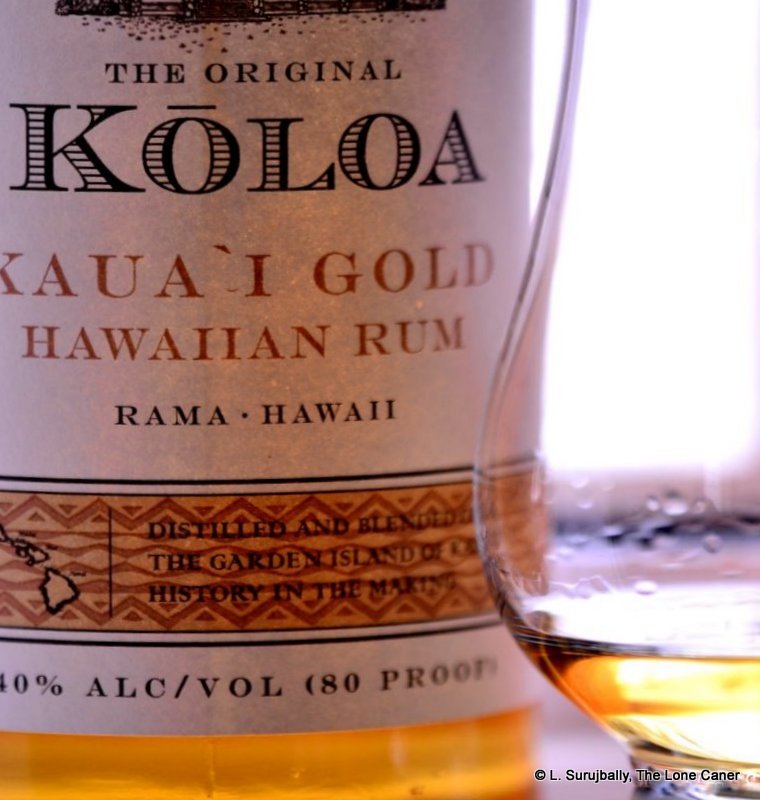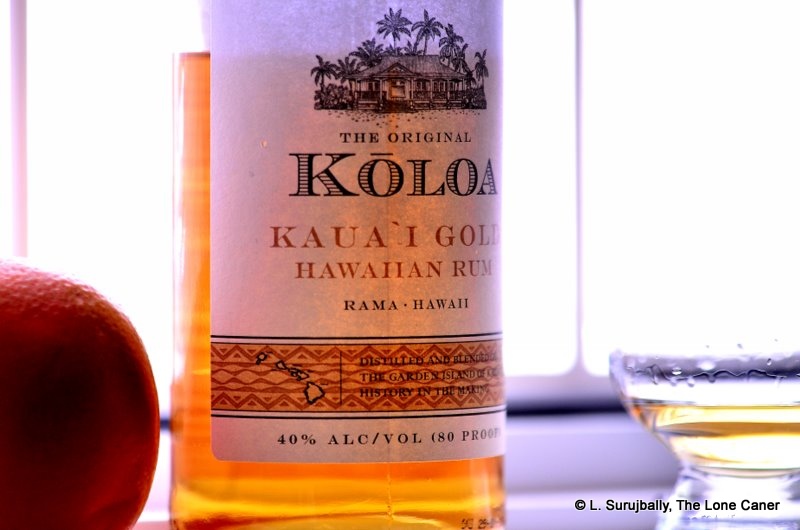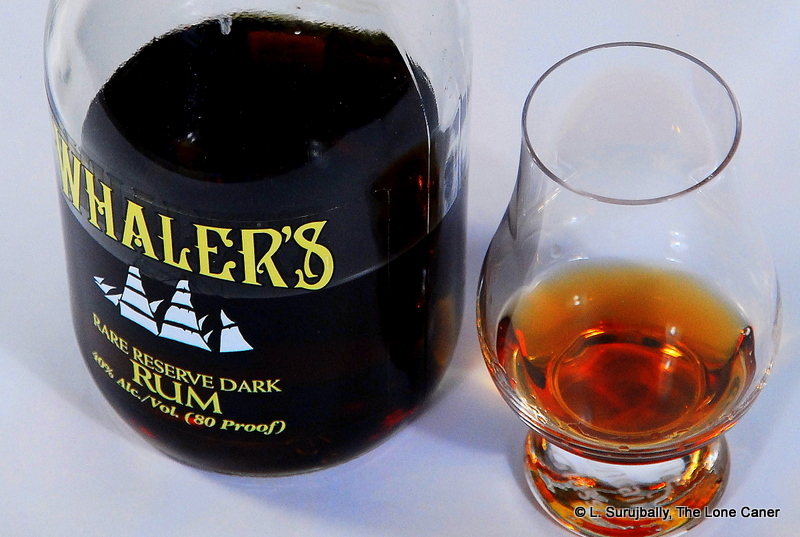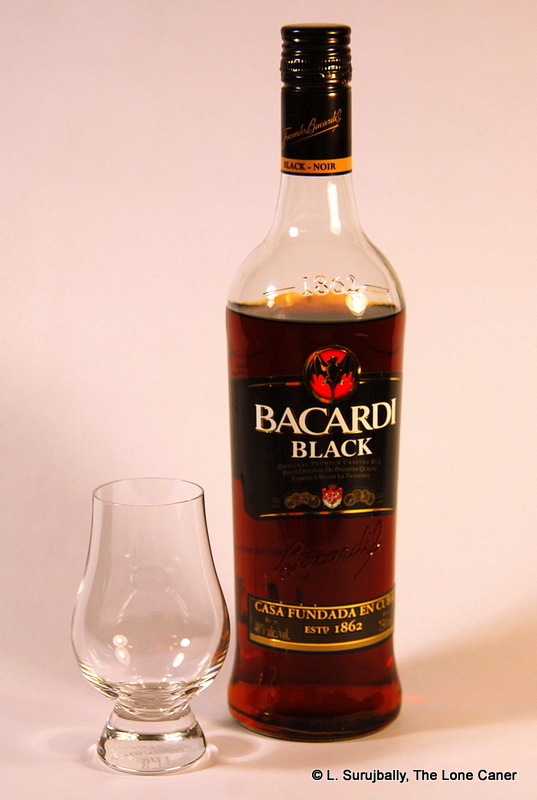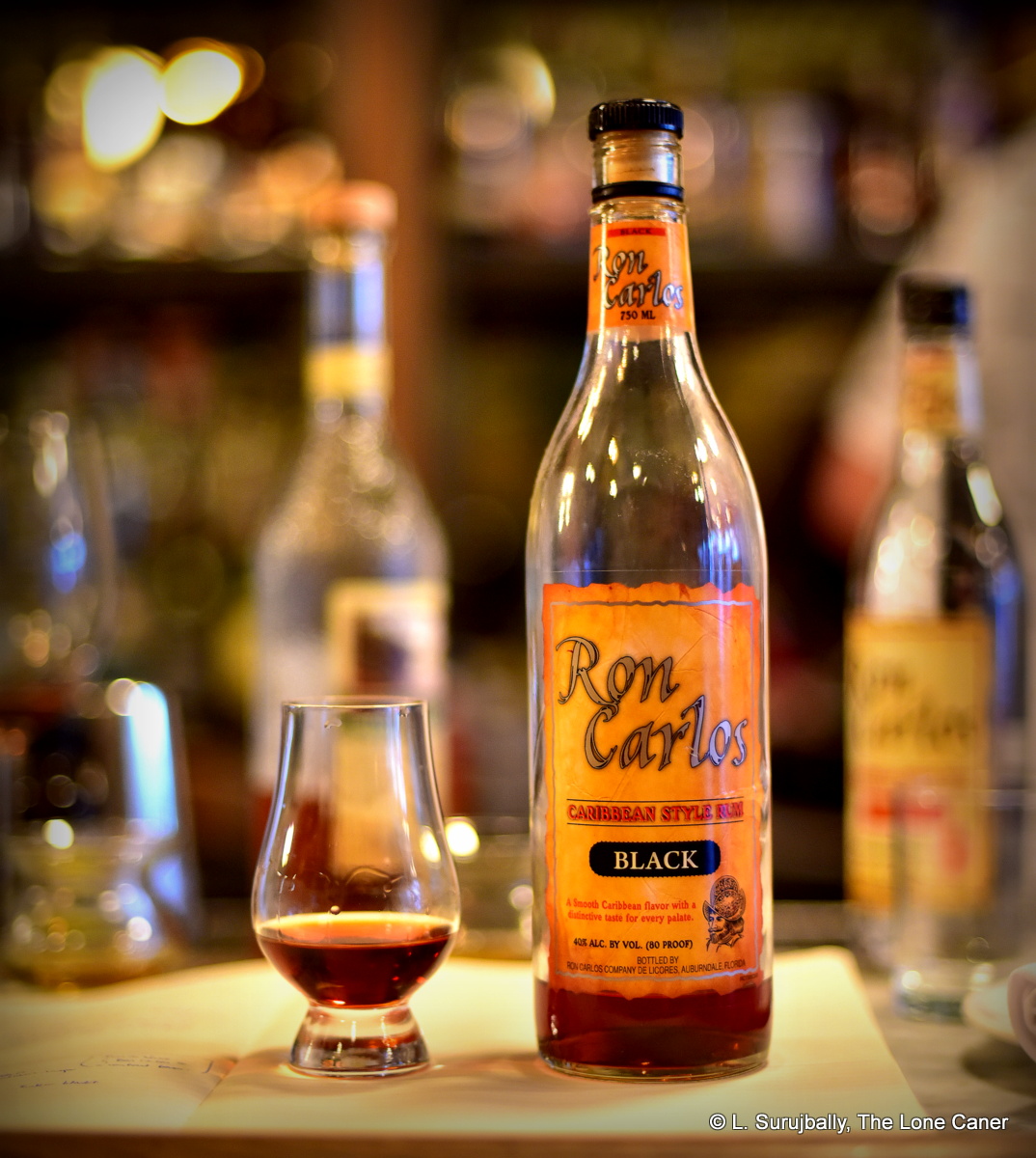
If you want to know why American supermarket rums (sometimes called “value rums” which is two lies at once) get such short shrift from so many rum folks, one like this is enough to explain the general indifference. It’s milquetoast, vague, with not a single point of interest, and that’s including the equally lackluster promotion that surrounds it.
Let’s start at the beginning. What is it, who makes it, where’s it from? We must begin with the label, which unfortunately just makes me want to cringe. No really.
For starters, it’s noted as a “Caribbean Style rum”. That’s about as useful as perfumery to a hog, as Tolstoy once remarked. Clearly the makers assume a level of ignorance of their customer base that is off the scale, since exactly what is that? Even Dave Broom in his seminal book “Rum” where he addressed that very question, backed away in horror at lumping all rums from the region together as “Caribbean.” So, we talking Guyana, Cuban, French Island, Jamaican, Barbadian? Nope. Won’t work. Useless.
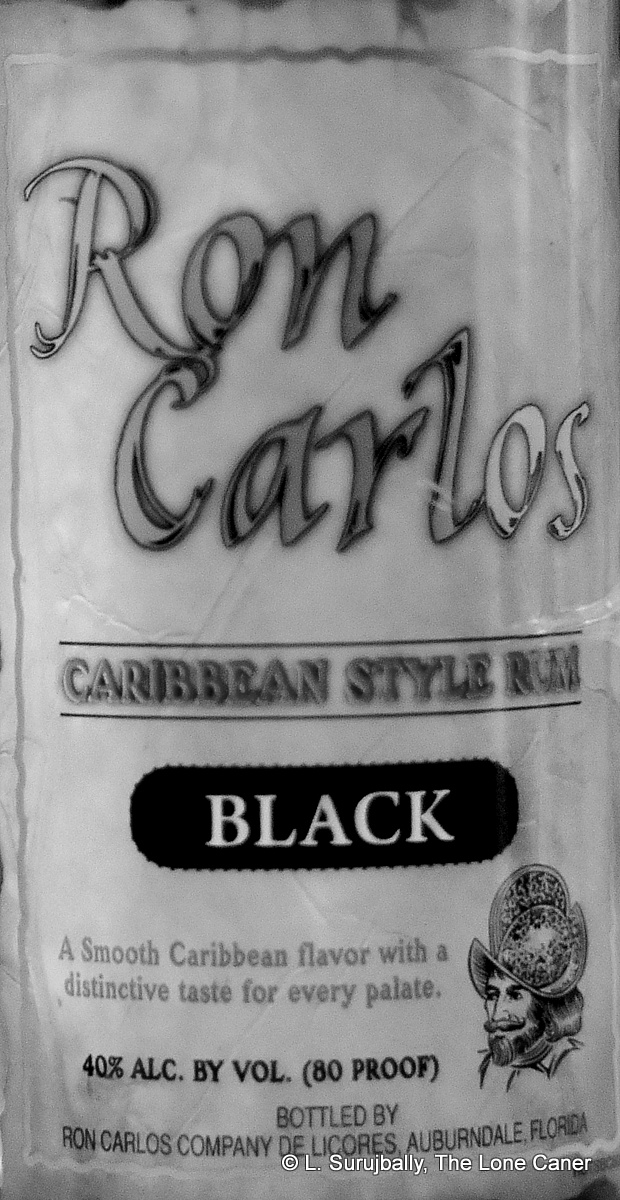 Next word: “Black”. Baby Rum Jesus help us. Long discredited as a way to classify rum, and if you are curious as to why, I refer you to Matt’s takedown of the matter, and anyway – the rum isn’t black, but dark brown. Then “A smooth Caribbean flavour with a distinctive taste for every palate.” Clearly we’re living back in Henry Ford’s time, where you can have any taste you want as long as it’s black. The irony of the statement is compounded by the fact that if it’s really distinctive, it cannot by definition appeal to every palate.
Next word: “Black”. Baby Rum Jesus help us. Long discredited as a way to classify rum, and if you are curious as to why, I refer you to Matt’s takedown of the matter, and anyway – the rum isn’t black, but dark brown. Then “A smooth Caribbean flavour with a distinctive taste for every palate.” Clearly we’re living back in Henry Ford’s time, where you can have any taste you want as long as it’s black. The irony of the statement is compounded by the fact that if it’s really distinctive, it cannot by definition appeal to every palate.
About the only thing we can take as a reasonable fact is the bottom part, where we see the rum is bottled by the “Ron Carlos Company de Licores, Auburndale Florida.”. Excellent. Who’re they? Google it and you’ll be directed to Florida Caribbean Distillers which is a massive industrial facility producing 188 proof near-neutral spirit (from various sources including cane) and reselling as bulk that around the world. And if the company name sounds familiar, it should be – this is the same multi-column-still factory contracted to make the Noxx & Dunn 2-4-5 Florida and the Florida Old Reserve rum I wrote about a year or two back.
Clearly this does less than enthuse me, but the Caner is nothing if not moronically persistent in the face of absurdity, so I gird up my loins and hoist my trusty glass and take one for the team so that you lot won’t have to.
It starts off in unspectacular fashion with very light caramel, chocolate, coffee and flambeed bananas. Some molasses pokes its head up like a gopher scanning for predators, then disappears, and there’s some citrus chittering waway in the background, too faint to make any kind of statement or balance off the thicker aromas in any significant way. You can sorta kinda sense some bubble gum and soda pop, sweet and fleeting, and that’s about it. About par for a 40% column still rum, to be honest.
The palate sinks the rum further. Oh, it’s so bad, so weak, so thin, so forgettable. All the notes from the nose prance and clump around with cement overshoes and no balance – chocolate, coffee, nougat, caramel, molasses and some raisins, and after a few hours (here’s where I started to reach out in desperation) some kiwi fruit and papayas. It’s a near neutral, all-neutered spirit, and whether they aged it or not is irrelevant, really – it’s just plain boring. As for the finish, well, it’s finished. It’s so faint as to be nonexistent, and I’m at a loss to tell you what it is I just had.
There’s something going on here under the hood – I think. It’s really a question of whether you’re sensitive enough to spot it and then, if you scale that hurdle, can identify what it is you got, ‘cause this sucker isn’t giving up anything easy. You’ll strain long and hard to make this rum wannabe surrender its unexceptional secrets, and frankly, I don’t think it has much to give up in the first place (except maybe a dash of alcohol into a cheap punch). Even if you’re on a budget, you can find better for the same price, and as for me, if I was in a bar this was all they had, I’d pay ‘em to make me not drink it.
(#682)(72/100)
Other notes
- On proof66, in a 2018 comment, it notes that “All Ron Carlos Rums now are being made in Puerto Rico by Club Caribe Distllers and bottled in Florida.” The poster opined that they’re better now than they were, and give Bacardi a run for its money. I chose to doubt that.
- As a point of interest, FCD controls the Caribe Distillery. Their primary market for rums is cruise lines, duty free shops, bulk sales elsewhere and contract rum creation (like Scheer does), alongside many other distilled spirits and brands.
- Given the absence of current references to the Black rum reviewed here, it’s possible that it morphed into the “Dark” and was further rebranded into the “Gold”, but evidence is somewhat lacking. I still have not been able to ascertain whether it’s been aged, but from the profile, I would suggest maybe one or two years.
- Neutral alcohol, neutral spirits spirits, or rectified spirits, are generally considered to be alcohol at 95% ABV or greater.
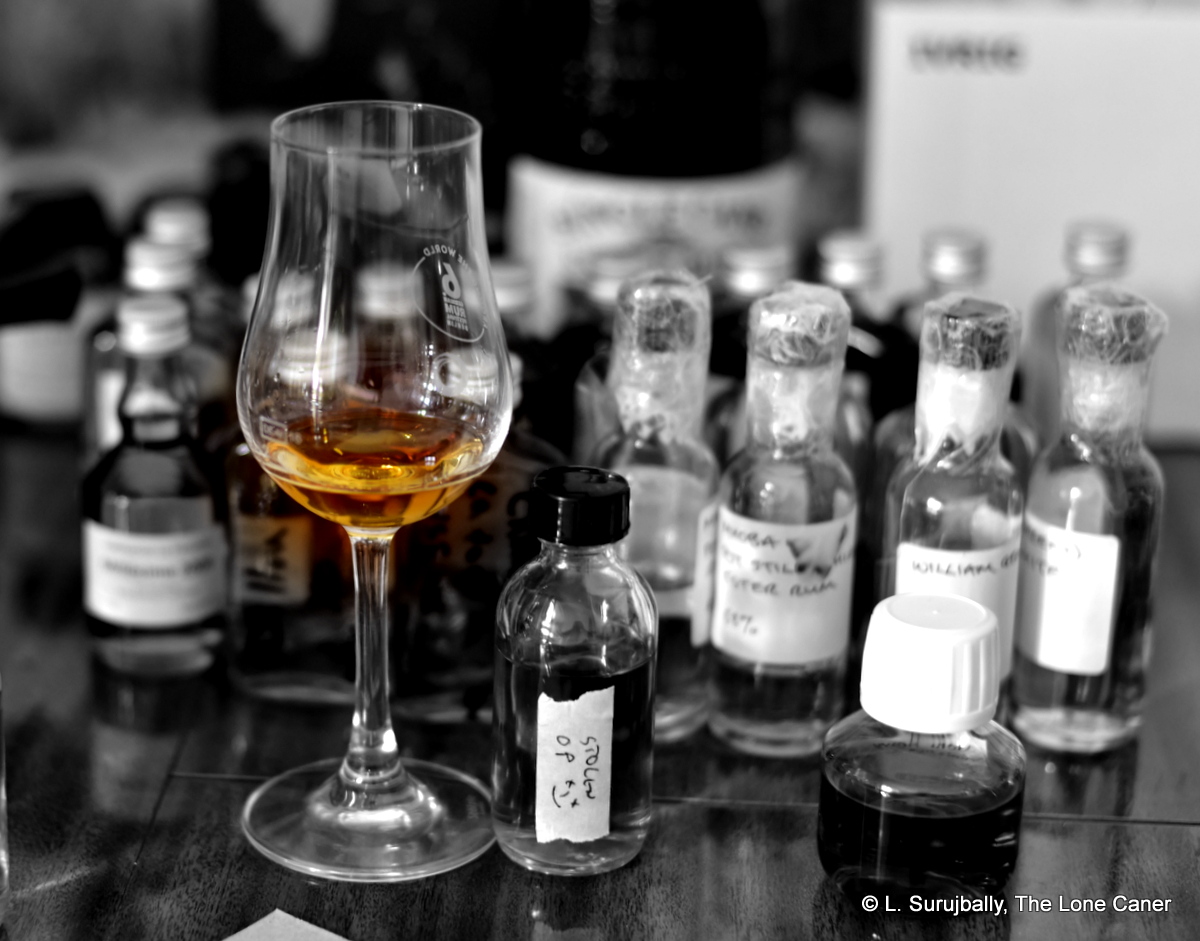
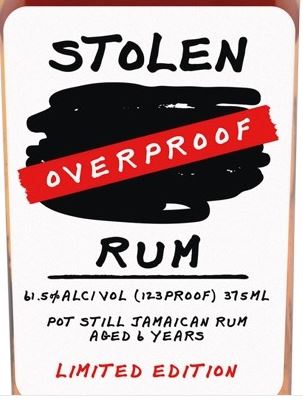
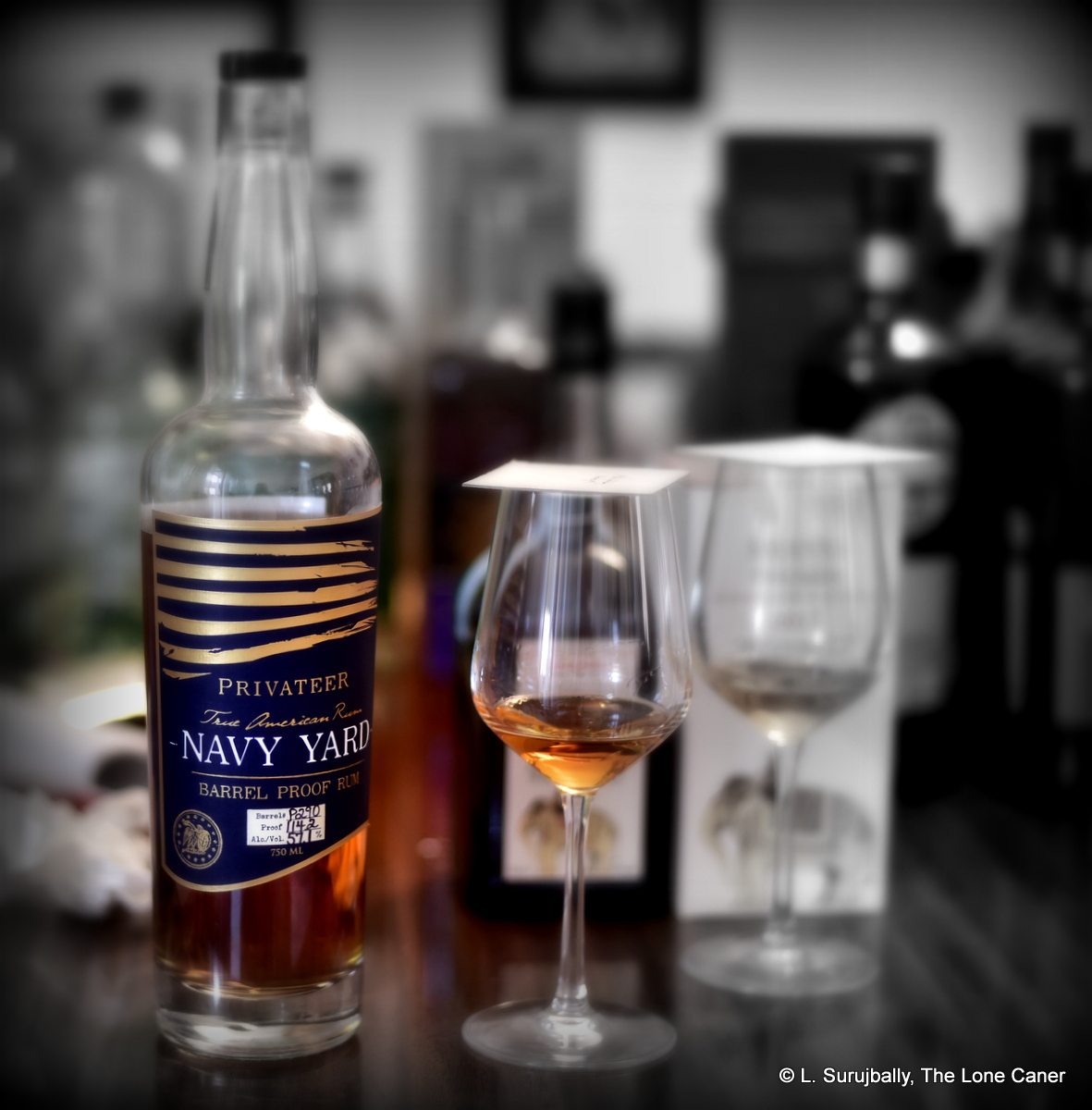
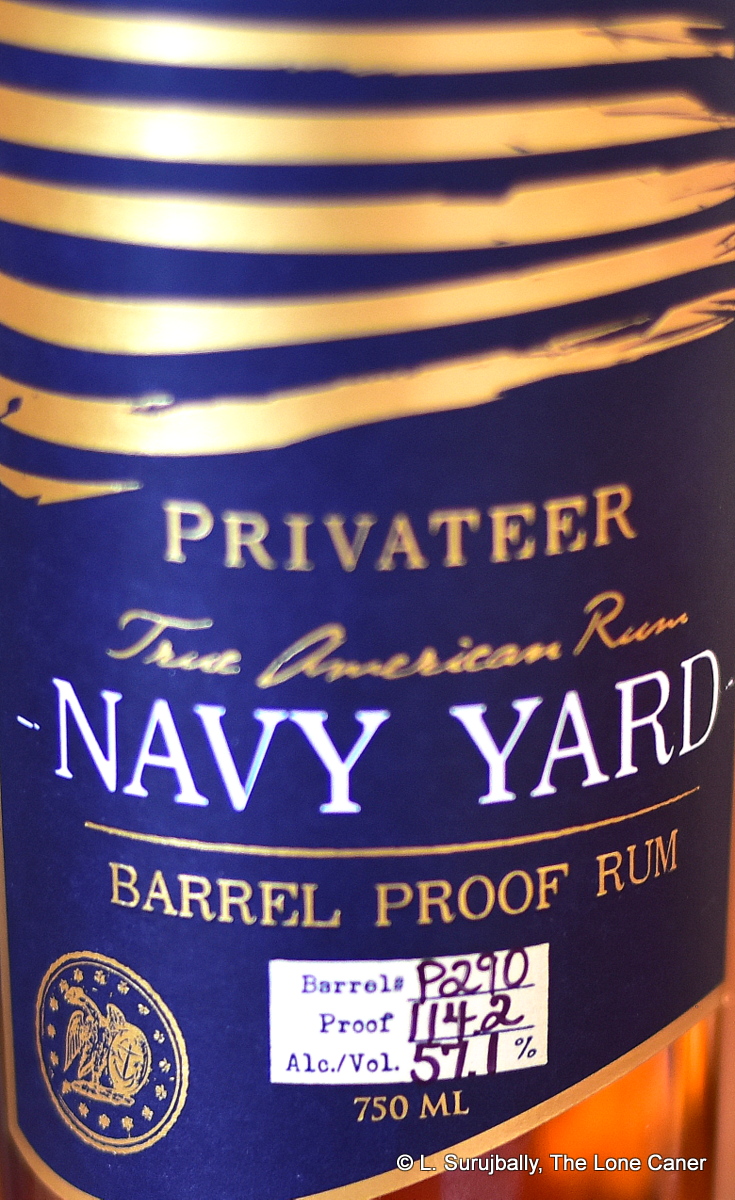 Privateer
Privateer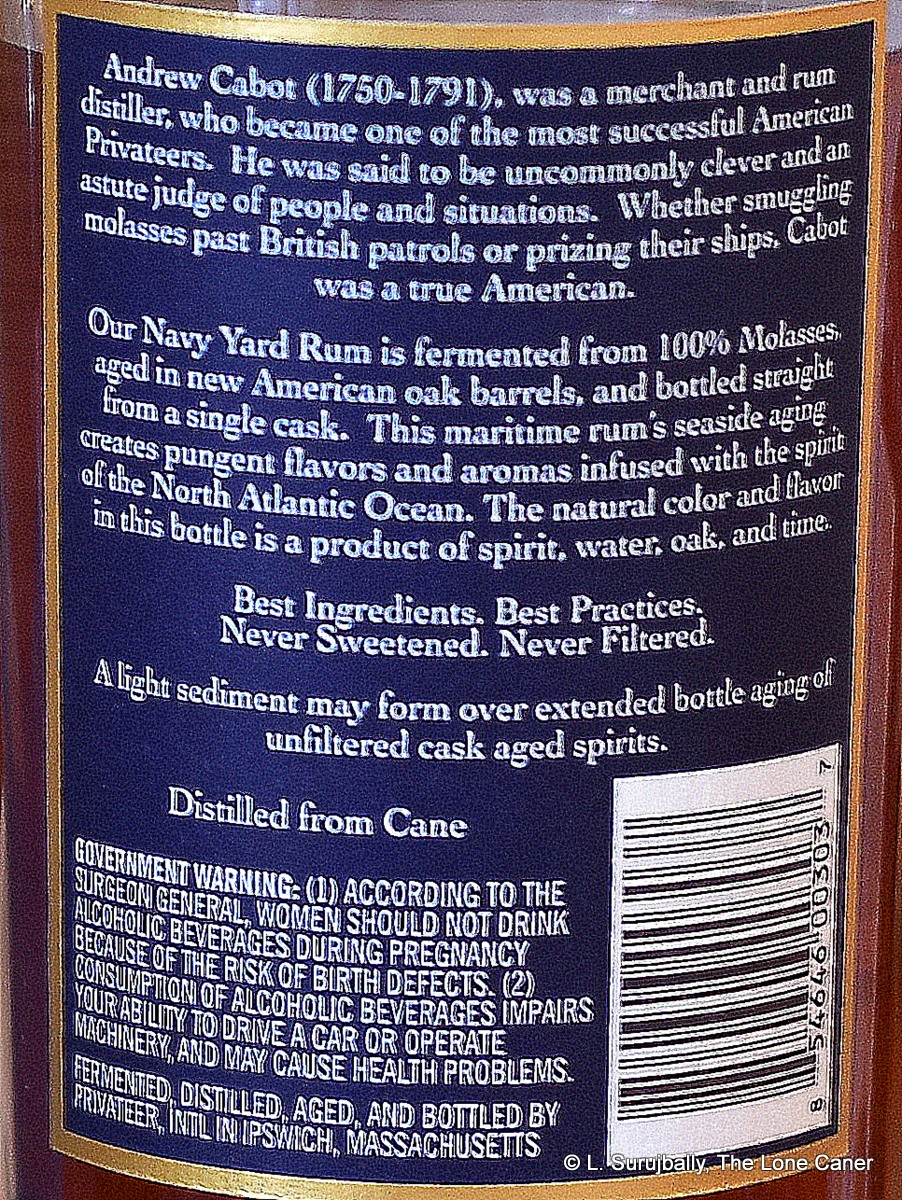 Overall, it’s a good young rum which shows its blended philosophy and charred barrel origins clearly. This is both a strength and a weakness. A strength in that it’s well blended, the edges of pot and column merging seamlessly; it’s tasty and strong, with just a few flavours coming together
Overall, it’s a good young rum which shows its blended philosophy and charred barrel origins clearly. This is both a strength and a weakness. A strength in that it’s well blended, the edges of pot and column merging seamlessly; it’s tasty and strong, with just a few flavours coming together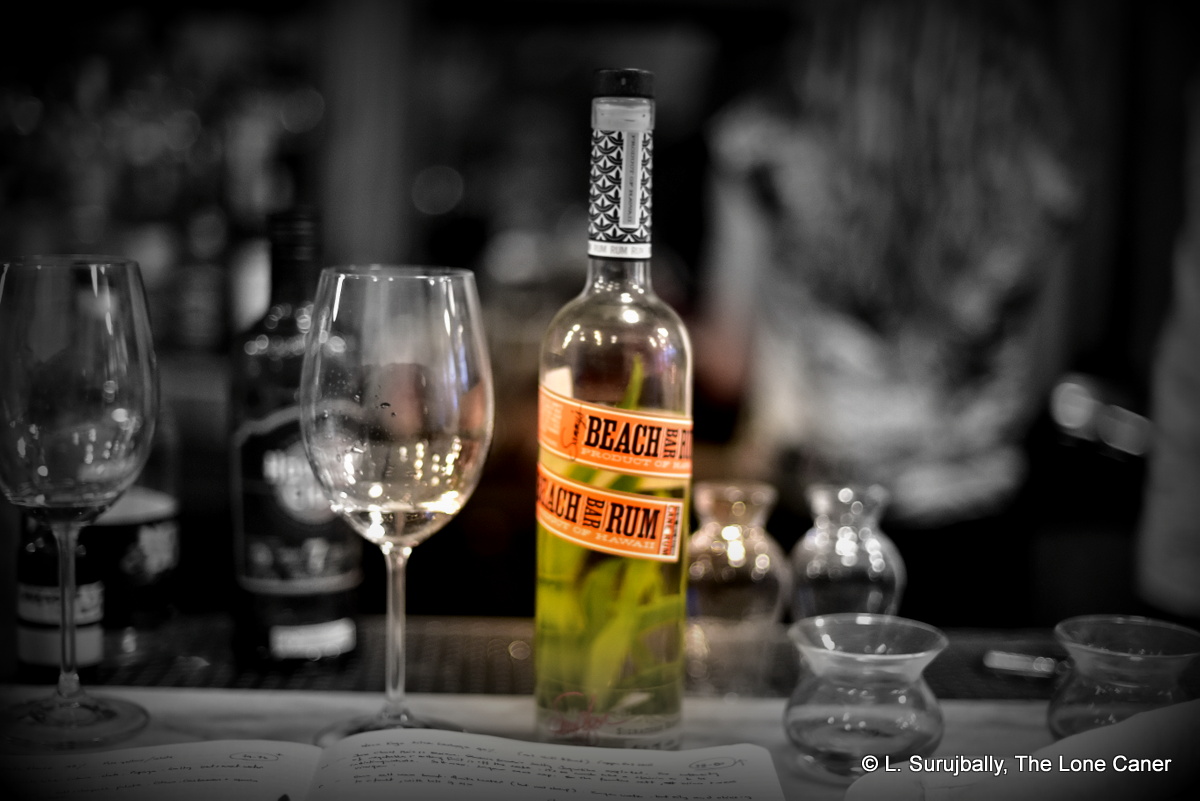
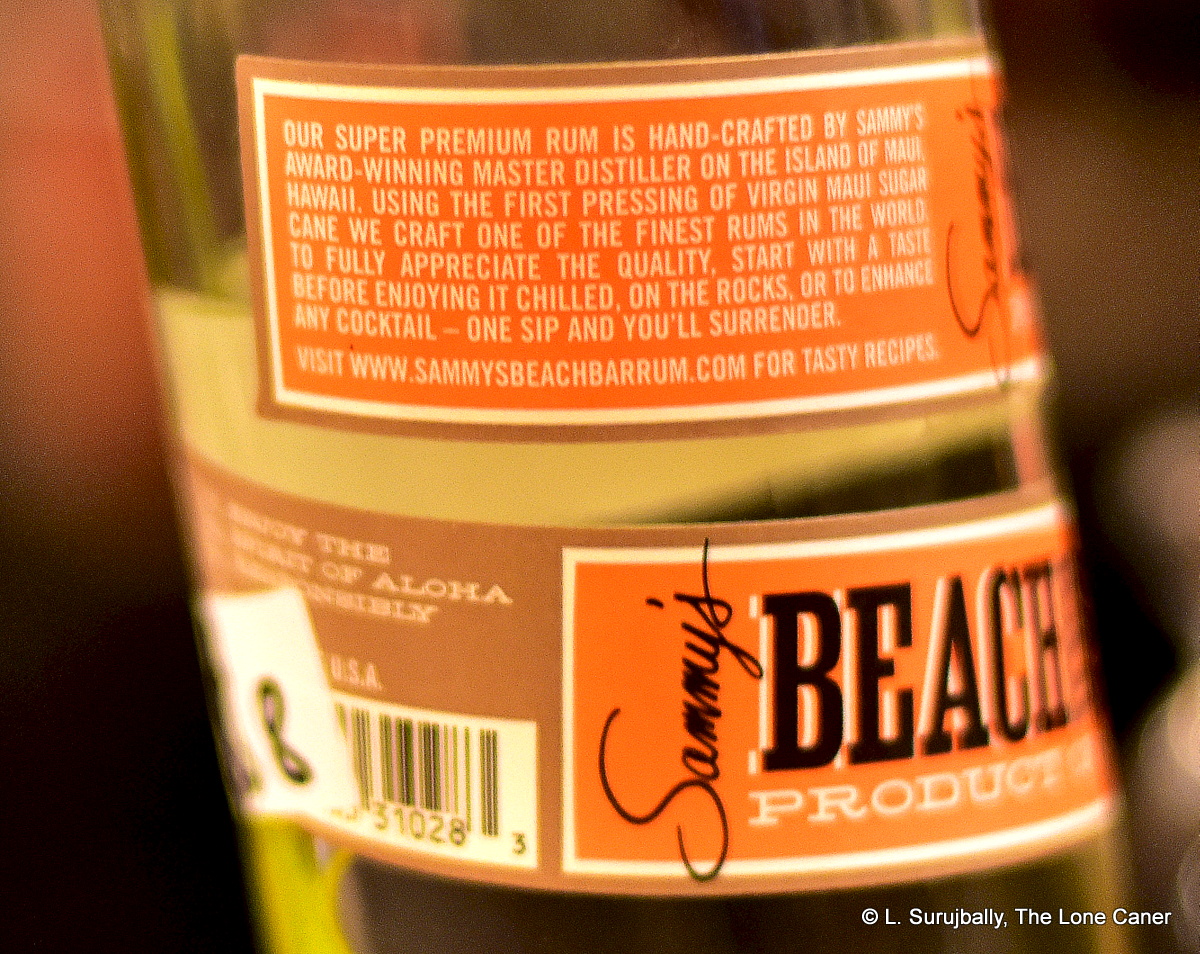 First off, it’s a 40% rum, white, and filtered, so the real question is what’s the source? The back label remarks that it’s made from “first pressing of virgin Maui sugar cane” (as opposed to the slutty non-Catholic kind of cane, I’m guessing) but the
First off, it’s a 40% rum, white, and filtered, so the real question is what’s the source? The back label remarks that it’s made from “first pressing of virgin Maui sugar cane” (as opposed to the slutty non-Catholic kind of cane, I’m guessing) but the 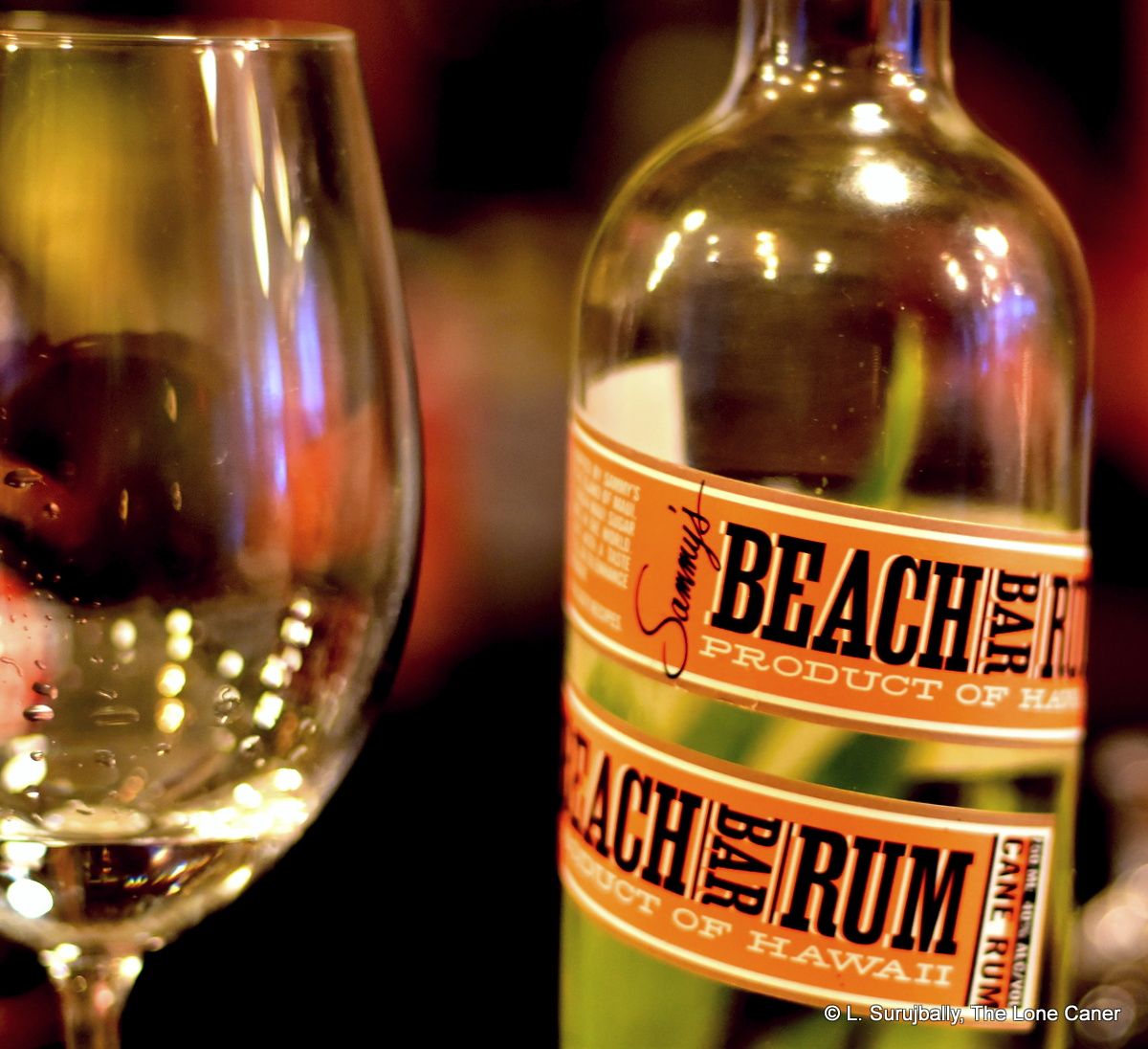 With some exceptions, American distillers and their rums seem to operate along such lines of “less is more” — the exceptions are usually where owners are directly involved in their production processes, ultimate products and the brands. The more supermarket-level rums give less information and expect more sales, based on slick websites, well-known promoters, unverifiable-but-wonderful origin stories and enthusiastic endorsements. Too often such rums (even ones labelled “Super Premium” like this one) when looked at in depth, show nothing but a hollow shell and a sadly lacking depth of quality. I can’t entirely say that about the Beach Bar Rum – it does have some nice and light notes, does not taste added-to and is not unpleasant in any major way – but the lack of information behind how it is made, and its low-key profile, makes me want to use it only for exactly what it is made: not neat, and not to share with my rum chums — just as a relatively unexceptional daiquiri ingredient.
With some exceptions, American distillers and their rums seem to operate along such lines of “less is more” — the exceptions are usually where owners are directly involved in their production processes, ultimate products and the brands. The more supermarket-level rums give less information and expect more sales, based on slick websites, well-known promoters, unverifiable-but-wonderful origin stories and enthusiastic endorsements. Too often such rums (even ones labelled “Super Premium” like this one) when looked at in depth, show nothing but a hollow shell and a sadly lacking depth of quality. I can’t entirely say that about the Beach Bar Rum – it does have some nice and light notes, does not taste added-to and is not unpleasant in any major way – but the lack of information behind how it is made, and its low-key profile, makes me want to use it only for exactly what it is made: not neat, and not to share with my rum chums — just as a relatively unexceptional daiquiri ingredient.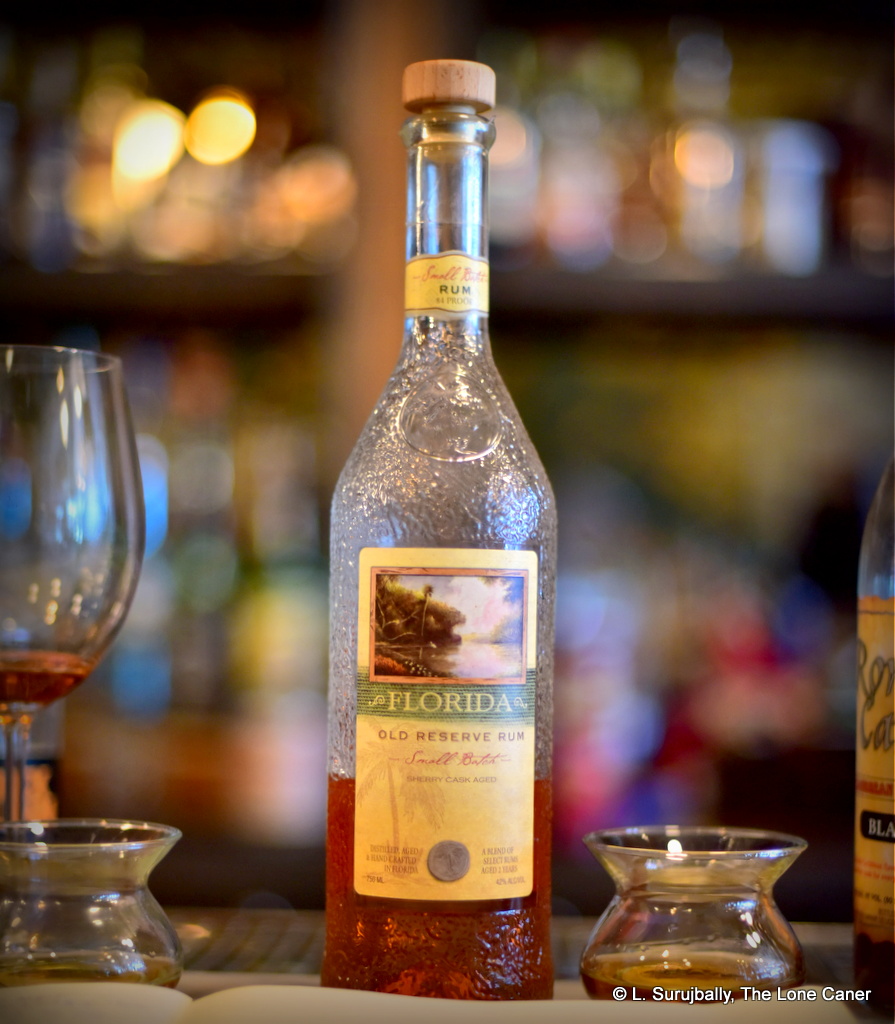
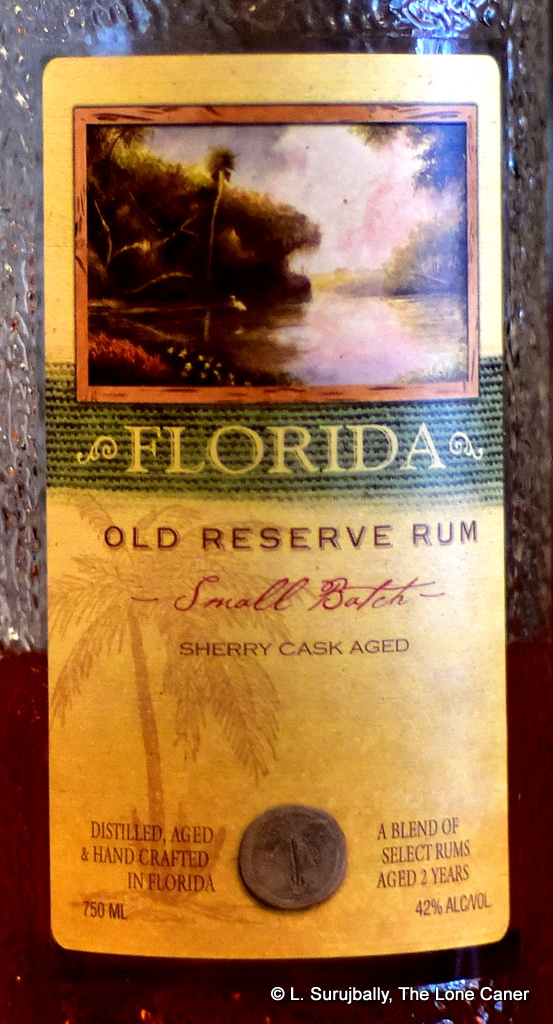 What it is, is a blend of “select rums” aged two years in sherry casks, issued at 42% and gold-coloured. One can surmise that the source of the molasses is the same as the Noxx & Dunn, cane grown in the state (unless it’s in Puerto Rico). Everything else on the front and back labels can be ignored, especially the whole business about being “hand-crafted,” “small batch” and a “true Florida rum” – because those things give the misleading impression this is indeed some kind of artisan product, when it’s pretty much a low-end rum made in bulk from column still distillate; and I personally think is neutral spirit that’s subsequently aged and maybe coloured (though they deny any additives in the rum).
What it is, is a blend of “select rums” aged two years in sherry casks, issued at 42% and gold-coloured. One can surmise that the source of the molasses is the same as the Noxx & Dunn, cane grown in the state (unless it’s in Puerto Rico). Everything else on the front and back labels can be ignored, especially the whole business about being “hand-crafted,” “small batch” and a “true Florida rum” – because those things give the misleading impression this is indeed some kind of artisan product, when it’s pretty much a low-end rum made in bulk from column still distillate; and I personally think is neutral spirit that’s subsequently aged and maybe coloured (though they deny any additives in the rum).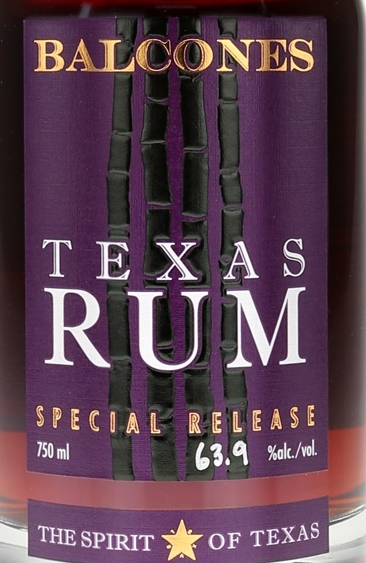 We don’t much associate the USA with cask strength rums, though of course they do exist, and the country has a long history with the spirit. These days, even allowing for a swelling wave of rum appreciation here and there, the US rum market seems to be primarily made up of low-end mass-market hooch from massive conglomerates at one end, and micro-distilleries of wildly varying output quality at the other. It’s the micros which interest me, because the US doesn’t do “independent bottlers” as such – they do this, and that makes things interesting, since one never knows what new and amazing juice may be lurking just around the corner, made with whatever bathtub-and-shower-nozzle-held-together-with-duct-tape distillery apparatus they’ve slapped together.
We don’t much associate the USA with cask strength rums, though of course they do exist, and the country has a long history with the spirit. These days, even allowing for a swelling wave of rum appreciation here and there, the US rum market seems to be primarily made up of low-end mass-market hooch from massive conglomerates at one end, and micro-distilleries of wildly varying output quality at the other. It’s the micros which interest me, because the US doesn’t do “independent bottlers” as such – they do this, and that makes things interesting, since one never knows what new and amazing juice may be lurking just around the corner, made with whatever bathtub-and-shower-nozzle-held-together-with-duct-tape distillery apparatus they’ve slapped together.